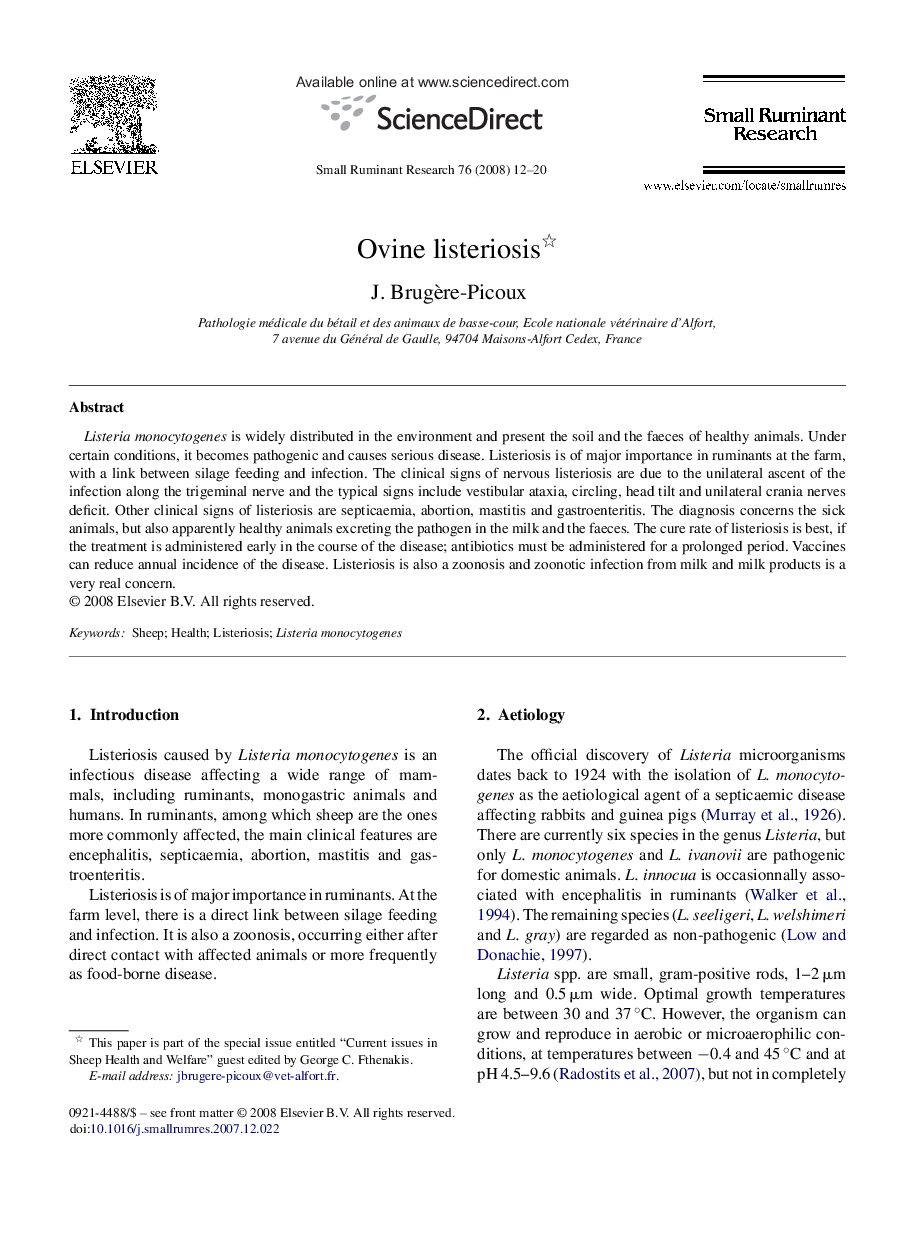| Article ID | Journal | Published Year | Pages | File Type |
|---|---|---|---|---|
| 2458005 | Small Ruminant Research | 2008 | 9 Pages |
Listeria monocytogenes is widely distributed in the environment and present the soil and the faeces of healthy animals. Under certain conditions, it becomes pathogenic and causes serious disease. Listeriosis is of major importance in ruminants at the farm, with a link between silage feeding and infection. The clinical signs of nervous listeriosis are due to the unilateral ascent of the infection along the trigeminal nerve and the typical signs include vestibular ataxia, circling, head tilt and unilateral crania nerves deficit. Other clinical signs of listeriosis are septicaemia, abortion, mastitis and gastroenteritis. The diagnosis concerns the sick animals, but also apparently healthy animals excreting the pathogen in the milk and the faeces. The cure rate of listeriosis is best, if the treatment is administered early in the course of the disease; antibiotics must be administered for a prolonged period. Vaccines can reduce annual incidence of the disease. Listeriosis is also a zoonosis and zoonotic infection from milk and milk products is a very real concern.
